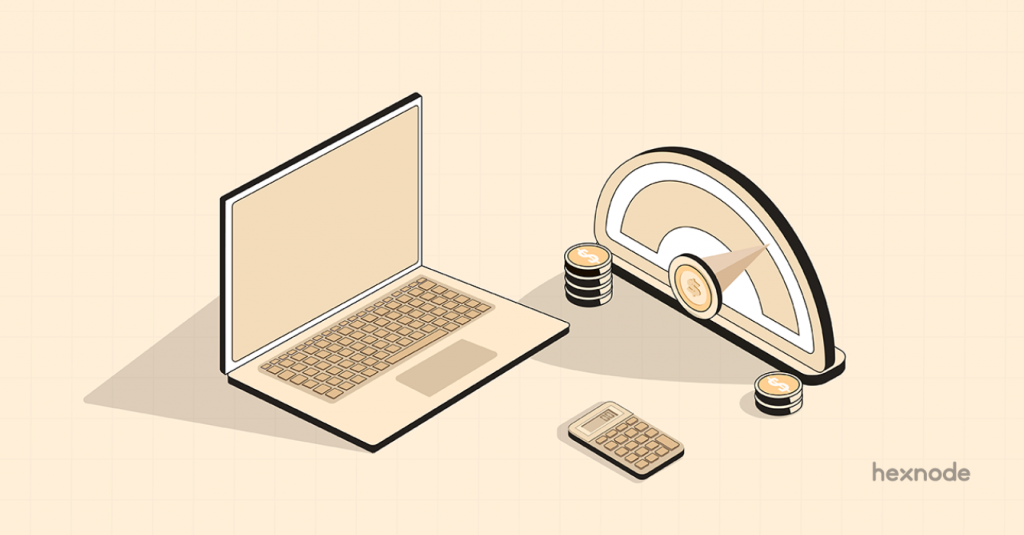Top 10 Mobile Application Management (MAM) Solutions
Know the top 10 MAM solutions that can help you manage applications on your corporate devices.

Get fresh insights, pro tips, and thought starters–only the best of posts for you.

Reducing IT costs is a major challenge faced by organizations of all sizes. The IT administrators struggle with how to reduce IT costs for their company while maintaining the security and productivity at the same time. In this regard, Unified Endpoint Management (UEM) solutions can play a crucial role by optimizing endpoint management processes, reducing the time and effort required to manage devices, and minimizing the risk of security breaches.
By using a UEM, organizations can automate routine tasks, such as software updates and patching, and streamline workflows, thereby improving efficiency and productivity. Additionally, UEM can help organizations to enforce security policies consistently across all endpoints, reducing the risk of data breaches and compliance violations. Furthermore, UEM can provide significant cost savings by reducing the need for manual intervention and minimizing the risk of security incidents.
UEM solutions offer a range of security features that enable organizations to enforce policies consistently across all endpoints, ensuring compliance and reducing the risk of data breaches. With UEM, IT administrators can configure security policies such as password complexity, encryption, and remote wipe, which are enforced across all devices. This ensures that all endpoints are protected, and that sensitive data remains secure, regardless of where it is accessed from.
Furthermore, UEM enables remote monitoring and management of endpoints, which allows IT administrators to identify potential security threats and take proactive measures to prevent them. By monitoring device activity and user behaviour, IT administrators can identify anomalies that may indicate a security breach, such as unauthorized access attempts or unusual data transfer activity.
One of the key security threats facing organizations is the loss or theft of mobile devices, which can result in the exposure of sensitive data. UEM can help prevent data breaches by providing features such as device tracking, remote locking, and data wiping. For example, if a mobile device is lost or stolen, IT administrators can use UEM to remotely locate the device, and if necessary, wipe all data from it. This prevents unauthorized access to sensitive data, even if the device falls into the wrong hands. This feature ensures that sensitive data remains protected, even if a device is lost or stolen.

Managing and maintaining security across hundreds of corporate devices is not an easy task for an IT team. Unified Endpoint Management (UEM) solutions have made the whole device management process simpler for enterprises and the IT admins.
Download White paperUEM solutions provide IT administrators and business leaders with a wealth of data on endpoint usage, device performance, and user behaviour. Analysing this data, organizations gain valuable insights into their IT and business operations, identifying areas for improvement and opportunities for optimization.
By leveraging the insights provided by UEM, organizations can make more informed decisions about their IT and business operations, resulting in significant cost savings. For example, by identifying which devices are underutilized, organizations can optimize their device inventory, reducing the need for unnecessary purchases.
One area where UEM can provide significant cost savings is in telecom expense management. Telecom expense management involves managing the costs associated with mobile and telecommunications services, such as voice, data, and messaging. For example, UEM can provide information on which users are exceeding their data limits, enabling IT administrators to adjust data plans to better match usage patterns. Additionally, UEM can track roaming usage, enabling organizations to negotiate better roaming agreements with mobile carriers. Furthermore, it provides valuable insights into telecom usage, enabling organizations to make data-driven decisions and optimize their telecom expenses.

Using UEM solutions, organizations can improve user experience and productivity by providing users with a seamless and consistent experience across all devices. It enables users to access the same applications, data, and settings on all their devices, which reduces the need for users to learn multiple systems. This, in turn, reduces confusion and increases productivity.
Additionally, UEM solutions also make it easier for IT administrators to provide support to users, reducing the time and resources required to manage devices. By providing remote assistance capabilities, IT administrators can quickly troubleshoot and resolve issues without requiring users to bring their devices into the office. Furthermore, it can automate routine device management tasks such as software updates and security patches, ensuring that devices are always up to date and ready to use. A UEM solution can also provide customized docks, home and lock screens and user interfaces based on the user’s role and device type, enabling users to quickly access the applications and data they need to perform their jobs.
For example, a sales representative may have a home screen that provides quick access to customer relationship management (CRM) tools and other sales applications, while a manager may have a lock home screen that provides access to productivity tools and analytics dashboards.
UEM tames endpoint complexity by simplifying device management and providing fully integrated support for multi-device architecture. Business people use many different devices for work, so IT support has to help with lots of different types of software, apps, and security on each device.
By adopting a UEM platform, organizations can simplify the management and security of heterogeneous user devices, for all endpoint devices in their support stack, rather than a collection of point solutions that are simply accessed from a common console. This allows for support for different OS types, helps in seamless migration, and caters to the diverse device set in a digital workspace, including BYODs, IoT, Sensors, Desktops, Laptops, Rugged, Wearables, Mobile, and Cloud, Kiosks, Printers, etc.
Many enterprises are reluctant to invest in UEM solutions due to the initial upfront costs. However, it is important to note that implementing UEM in a unified manner can be highly cost-effective in the long run. With UEM, businesses can benefit from a single console to set up and manage different types of devices, reducing the complexity of managing multiple platforms. Additionally, UEM solutions can reduce hardware costs by extending the life of devices through improved maintenance and management.
For example, an IT administrator can use UEM to schedule software updates for all devices during non-business hours, reducing the impact on user productivity.
UEM’s centralized approach reduces the need for multiple management tools. It helps IT administrators to streamline device management, thereby reducing the manpower required for device management.
Furthermore, it enables IT administrators to manage devices remotely. They can perform tasks such as app deployment, policy enforcement, security management, and software updates from a central location without physically accessing each device. This eliminates the need for IT staff to spend time traveling to different locations to manage devices. Also, it reduces the time and cost associated with device management.
UEM helps reduce IT costs through app management in several ways. First, UEM provides centralized app management. This allows IT administrators to easily manage and deploy apps across all devices and operating systems from a single console. Additionally, this reduces the time and resources required for app management.
Second, UEM allows for the creation of app catalogs. These catalogs provide users with a self-service portal for app installation and management. This reduces IT support calls and allows users to manage their own app usage.
Furthermore, UEM enables businesses to deploy kiosk mode settings to multiple devices simultaneously. These settings restrict the device to a specific application or set of applications. This reduces the need for manual configuration and empowers end-users to perform routine tasks themselves, such as checking inventory, placing orders, or making reservations, without requiring IT assistance.
It also reduces the help desk costs and increases productivity. Additionally, self-service kiosks provide customers with quick and easy access to services, thereby improving their experience and increasing productivity. For example, a hotel chain can deploy self-service kiosks at the front desk, allowing customers to check-in and check-out quickly without requiring assistance from hotel staff. This reduces the workload on hotel staff and improves the customer experience by reducing wait times.
Hexnode UEM offers zero-touch deployment, enabling hassle-free device provisioning without any manual intervention. With this feature, IT admins can easily configure devices remotely and manage them from a centralized console.
Real-time monitoring and management is another advantage of Hexnode UEM. It allows IT administrators to keep an eye on device status, location, and activity in real-time. This ensures swift remediation of any issues that arise remotely.
Hexnode UEM comes with powerful reporting capabilities. These help organizations gain better insights into device usage, compliance status, security vulnerabilities, and more. These reports can be customized and scheduled for regular delivery.
Hexnode UEM’s kiosk mode feature allows administrators to configure devices for specific use cases. This improves security by limiting access to approved apps and functions and can also increase productivity by streamlining device functionality. This is particularly useful for retail, hospitality, and other customer-facing industries. Businesses in these sectors need to limit device access to a particular application, such as a point-of-sale (POS) system.
Hexnode UEM offers telecom expense management capabilities, allowing organizations to track and manage their mobile data and network expenses, reducing unnecessary costs and improving cost predictability. This feature helps organizations gain visibility into their expenses, identify areas for cost optimization, and reduce overall telecom expenses.
UEM can simplify endpoint management and automate tasks such as software updates and security patches. This helps organizations streamline IT operations, reduce labor costs, and allocate resources to strategic initiatives. By using UEM, businesses can improve their bottom line, efficiency, and productivity. So, if you are wondering how to reduce IT costs and improve your IT operations, consider adopting a UEM solution like Hexnode today.
Try out Hexnode UEM to reduce your IT costs and effectively manage all your devices.
Sign up now